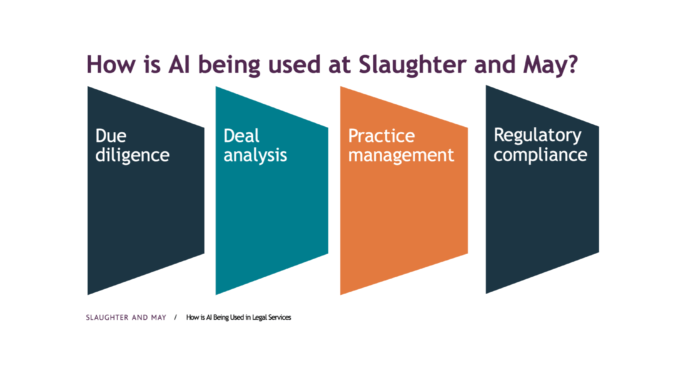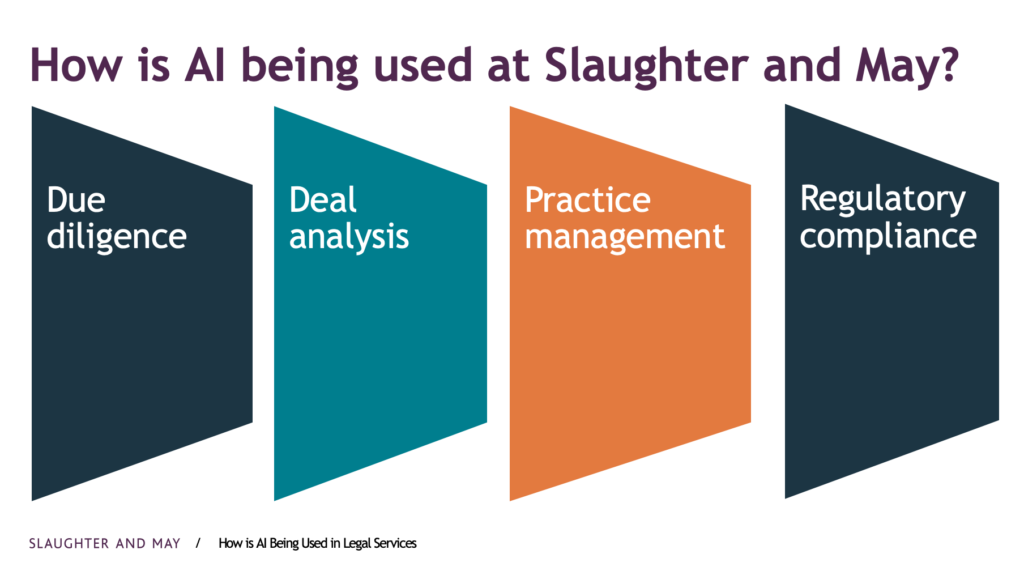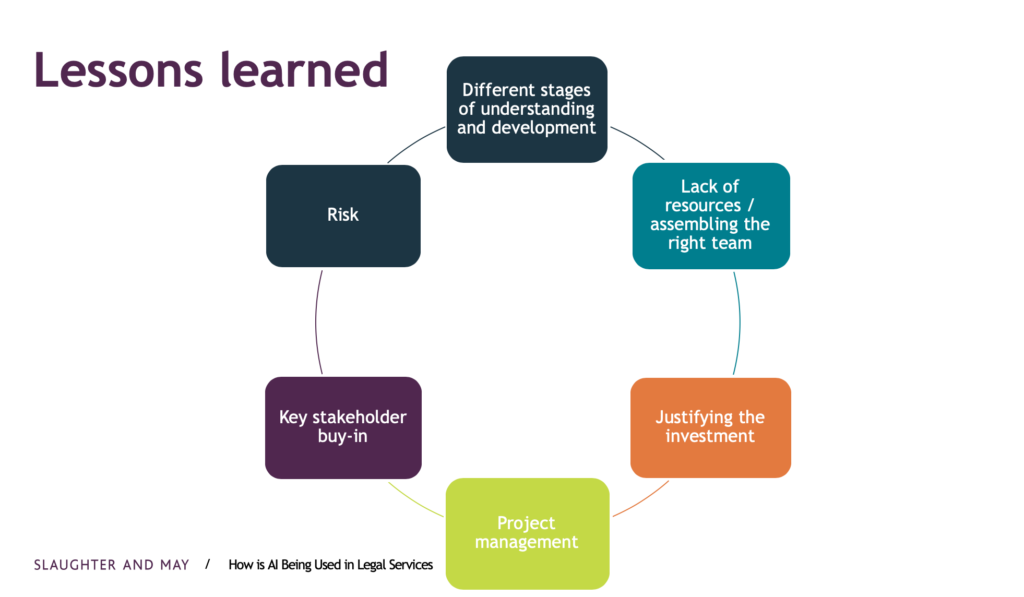
Slaughter and May (S+M) recently set out how it is making use of legal AI technology across the firm in a talk at Oxford University’s Saïd Business School, and Artificial Lawyer was there to hear it.
As part of the ‘AI for English Law’ conference, Alex Woods, Head of Knowledge Management, and Jane Stewart, Head Of Innovation, explained that S+M has now moved far beyond leveraging legal AI technology, such as Luminance, just for M&A due diligence review.
They had steadily evolved their approach and were now at a stage of actively applying AI technology wherever there was real value in doing so.
‘Part of my job is to find uses for AI technology. And wherever you have data you can see patterns inside it,’ explained Stewart.

She noted that along with expanding beyond M&A transactional work into other practice areas, the firm was also spending time to see how they could ‘surface patterns’ from the firm’s vast KM stores of documents and precedent banks.
They’ve also been looking at how they can develop systems that will help recommend KM insights, such as precedents, depending on what a lawyer may be drafting.
But, that’s just part of the picture, Woods and Stewart went on to explain that they are also exploring how to use AI techniques for GDPR issues, analysing ISDA derivatives contracts and mortgage documents.
They’ve also found it to be useful for bulk redaction in document sets.
In short, if there is unstructured data there – and law firms and their clients are overflowing with it – and they have a tool, such as Luminance that can be applied to it, then S+M’s innovation and KM teams are looking at how they can deliver value with an AI approach.
Training Data
Woods and Stewart also talked about how the firm is making the use of tools such as Luminance a key part of the training they now expect their trainees to be involved in.
For example, all of S+M’s trainees (i.e. junior lawyers before formal qualification as solicitors) now use Luminance and train with it.

‘We have embedded AI into our legal training. Trainees have to teach Luminance clauses as part of their training. This is not seen as separate from the practice of law,’ they explained.
This clearly shows just how seriously S+M is taking this. However, this is not completely without challenges, Woods and Stewart also highlighted the need for proper governance around classification of data and legal terms that may have been taught into the AI system.
‘Governance is critical, setting up tagging and naming conventions is essential,’ said Woods.
That is to say you don’t want one group of associates tagging things one way and another classifying things in another way. That might lead to poor results from the AI system.
Buy In
Although S+M was Luminance’s first client, is an investor in it, and even helped shape the product before it went to market, even here it was not all plain sailing.
Woods and Stewart explained that despite a lot of enthusiasm across the firm they still needed to produce a lot of very solid empirical data, showing everything from accuracy, to time savings.
They regularly conduct comparative tests to ensure that taking the AI route is an improvement, they added. But this approach seems to have worked and won the buy in they need to move forward.
The Future
Although S+M has come a very long way in a very short space of time with AI technology, this is still early days. After all, the firm only announced its work with Luminance in late 2016 – a blink of an eye for a firm of S+M’s history.
Woods and Stewart look like their work will only increase and that there is plenty more to do and explore.
Stewart adds: ‘Clients are getting very interested in this. We want to collaborate with them and go on to develop use cases with them.’
This latter area of exploration could be fascinating. Who knows what a firm with S+M’s client base could develop if General Counsel and their teams decided to really work together with S+M’s innovation team to leverage AI technology?
To conclude, if S+M can get this far in just a couple of years then it bodes extremely well. If a firm that is steeped in history can re-engineer significant strands of its legal services delivery model in such a short space of the time, then anything is possible over the long term – both for S+M and for those law firms that also take a similar approach to a broad use of AI technology.

